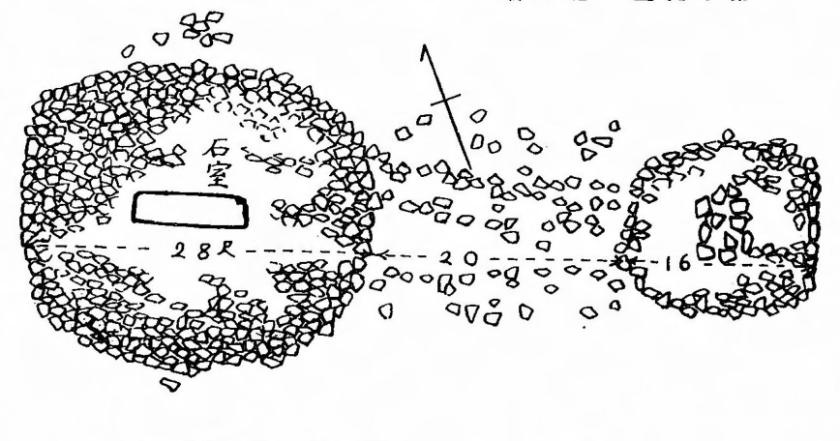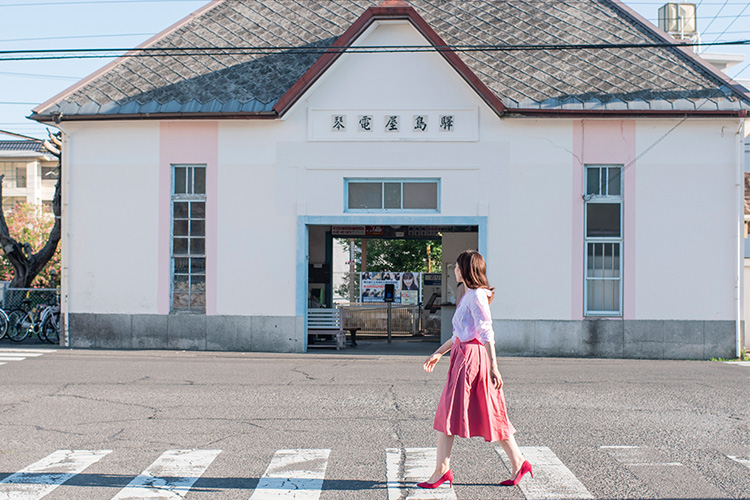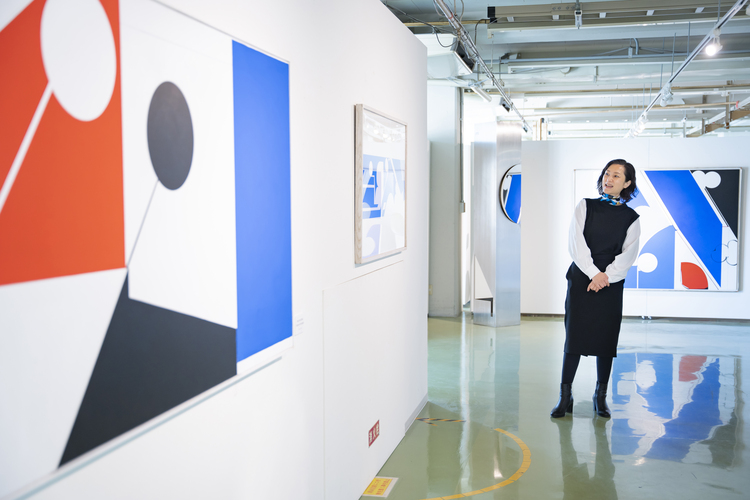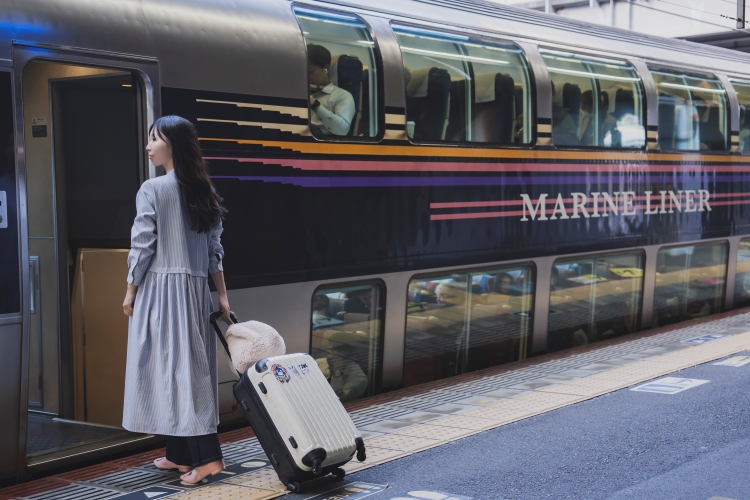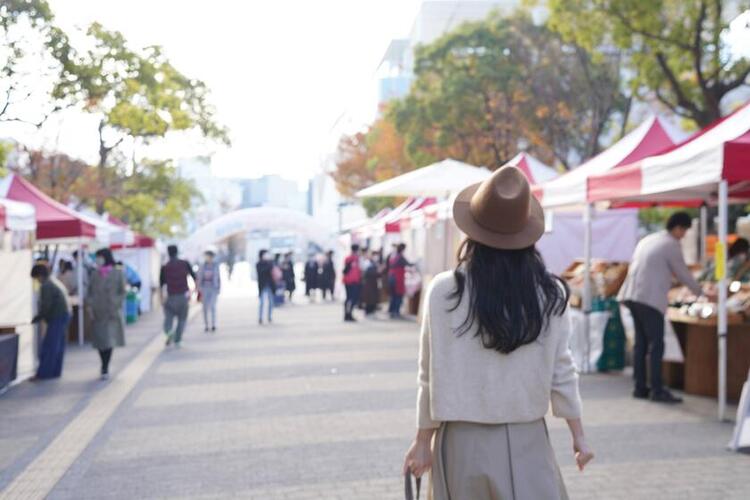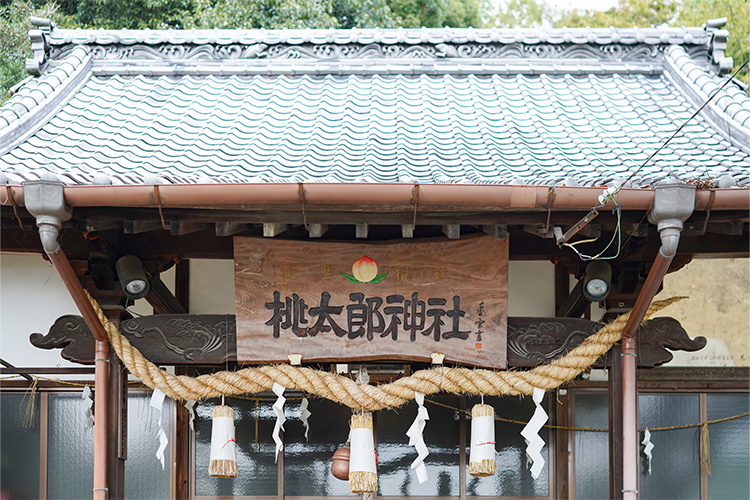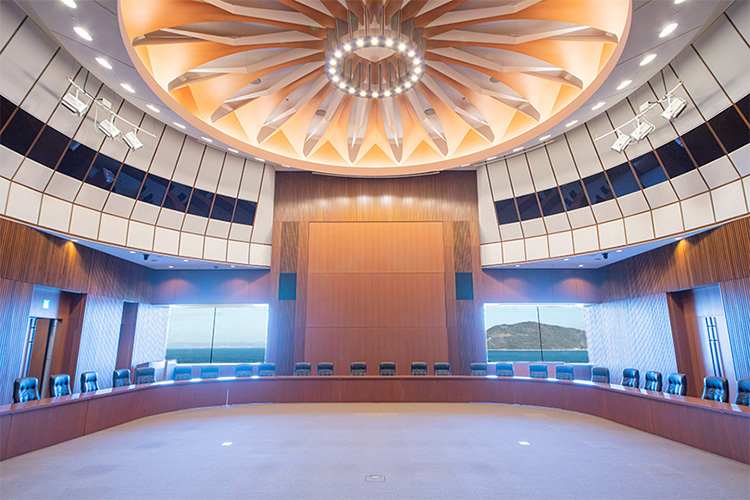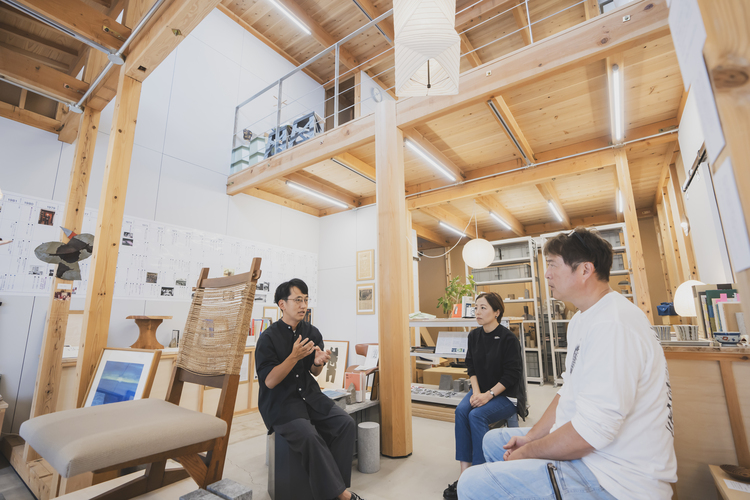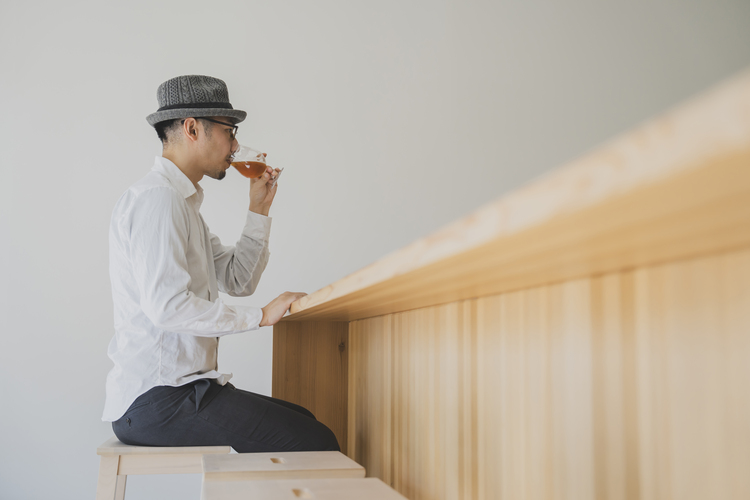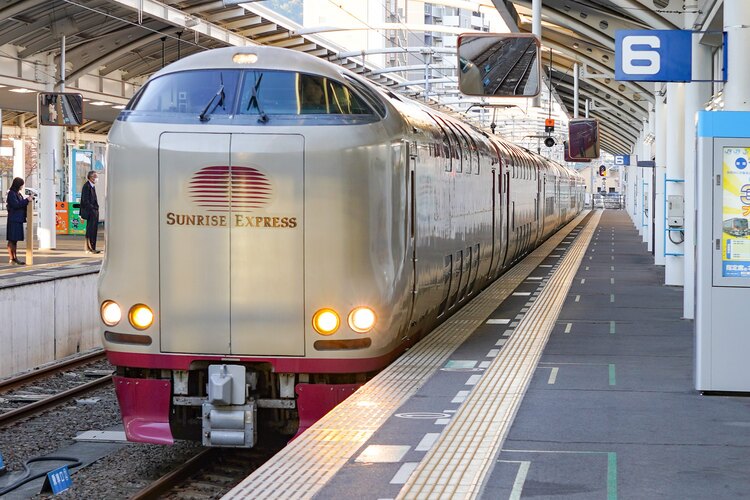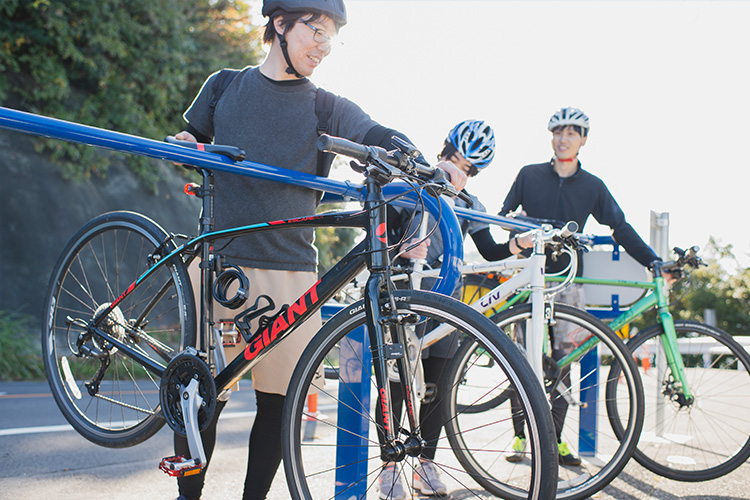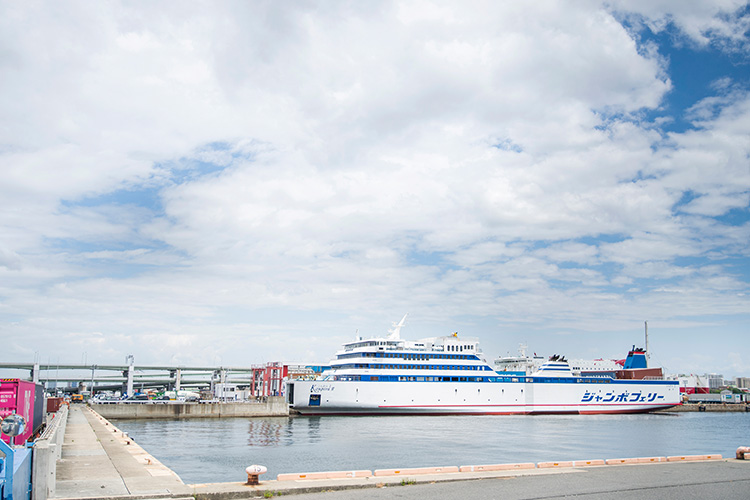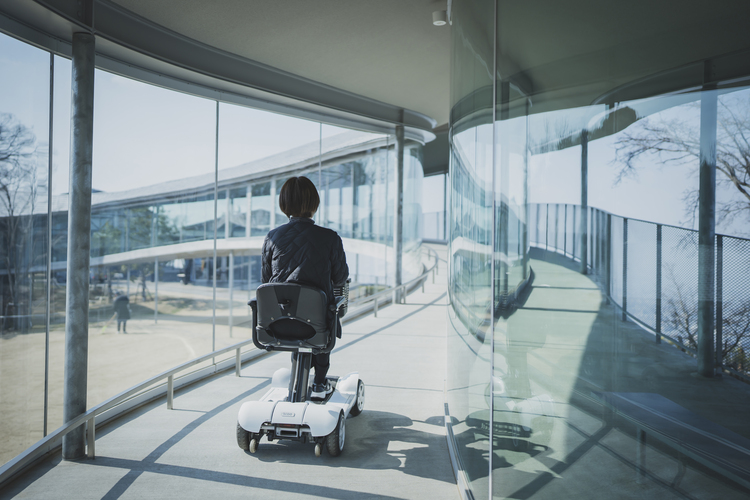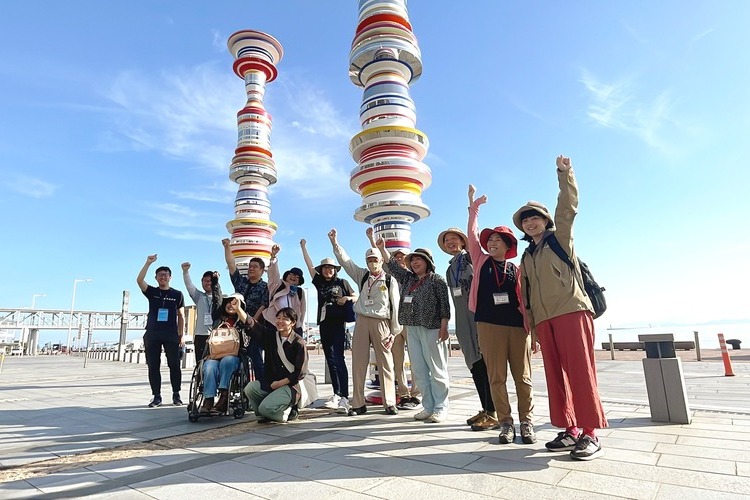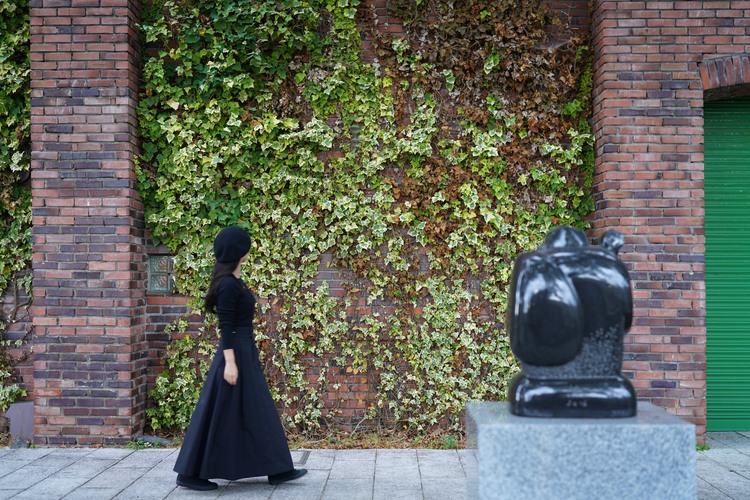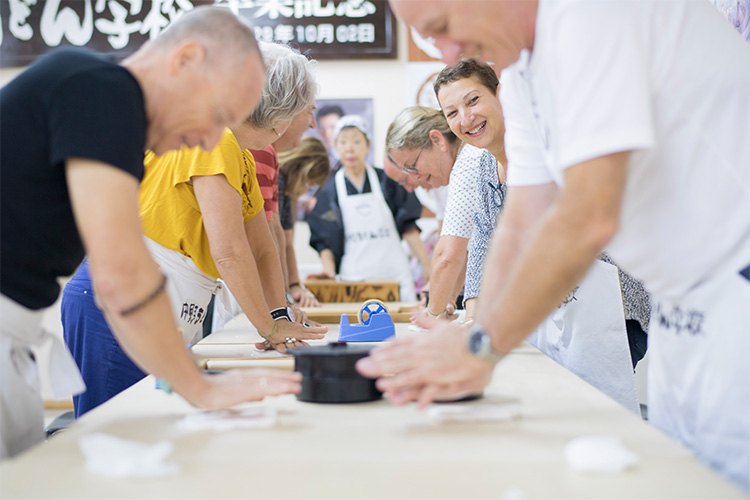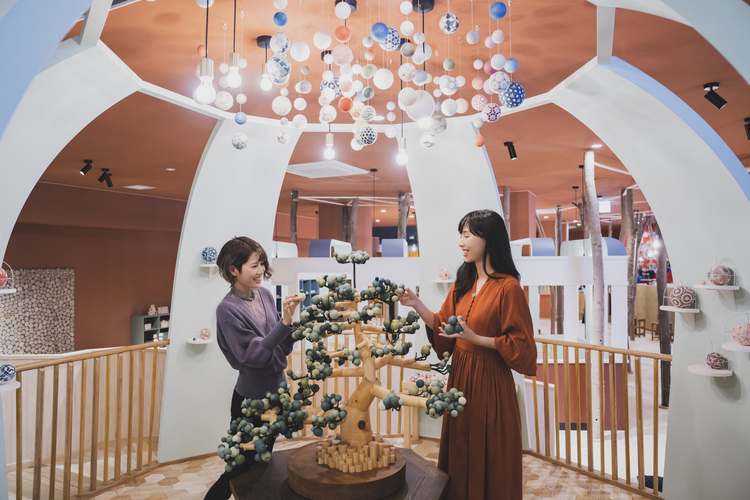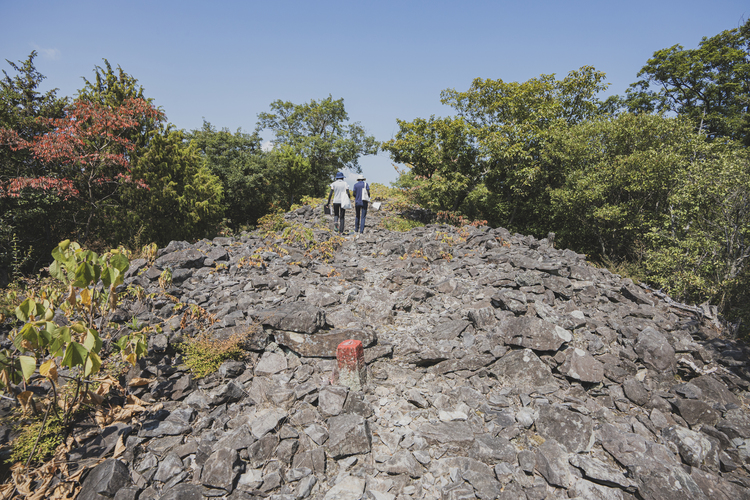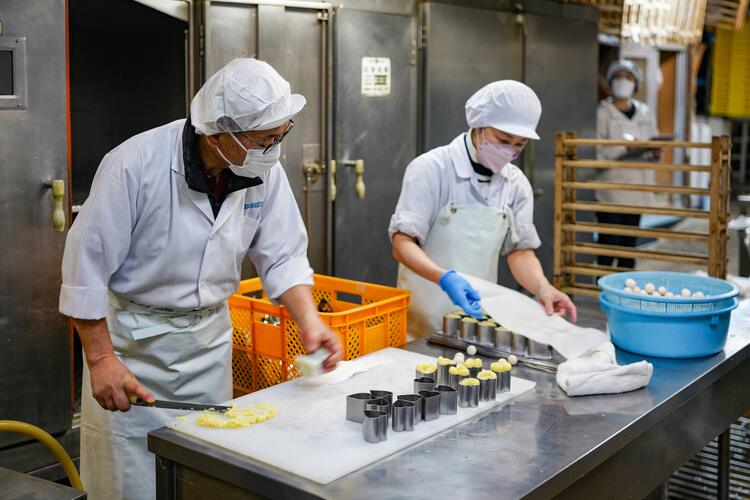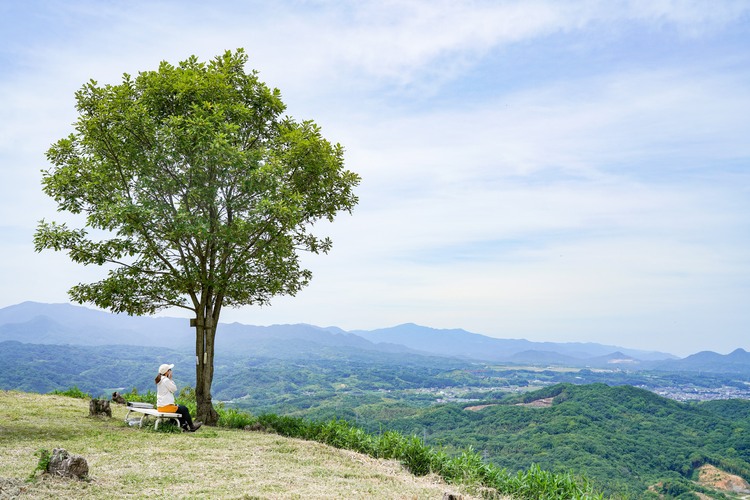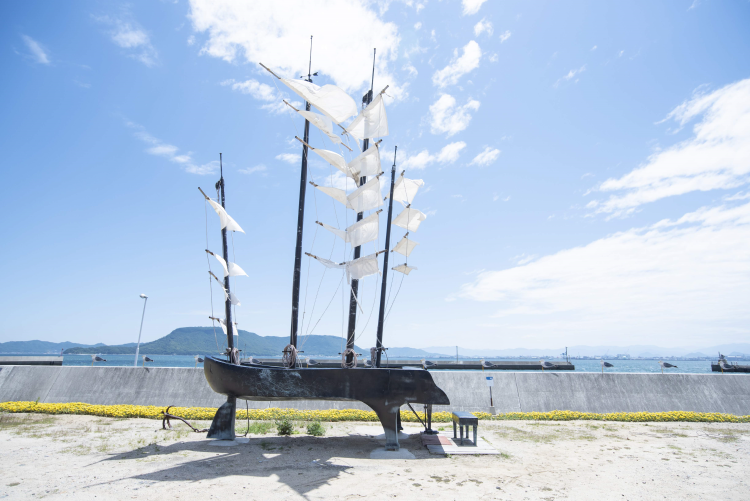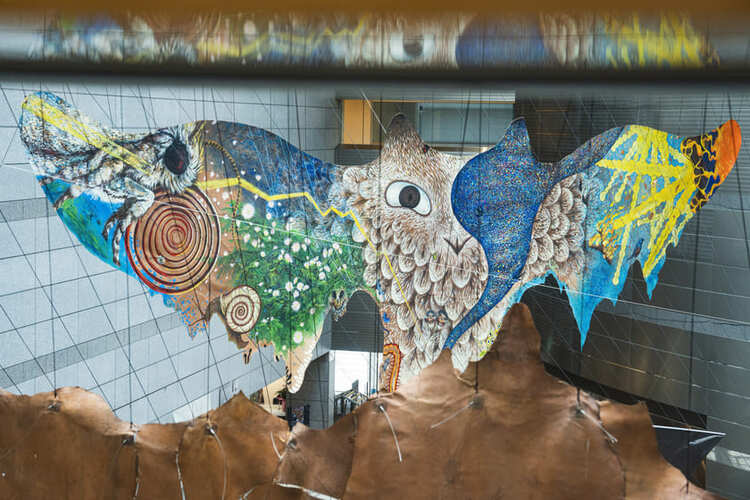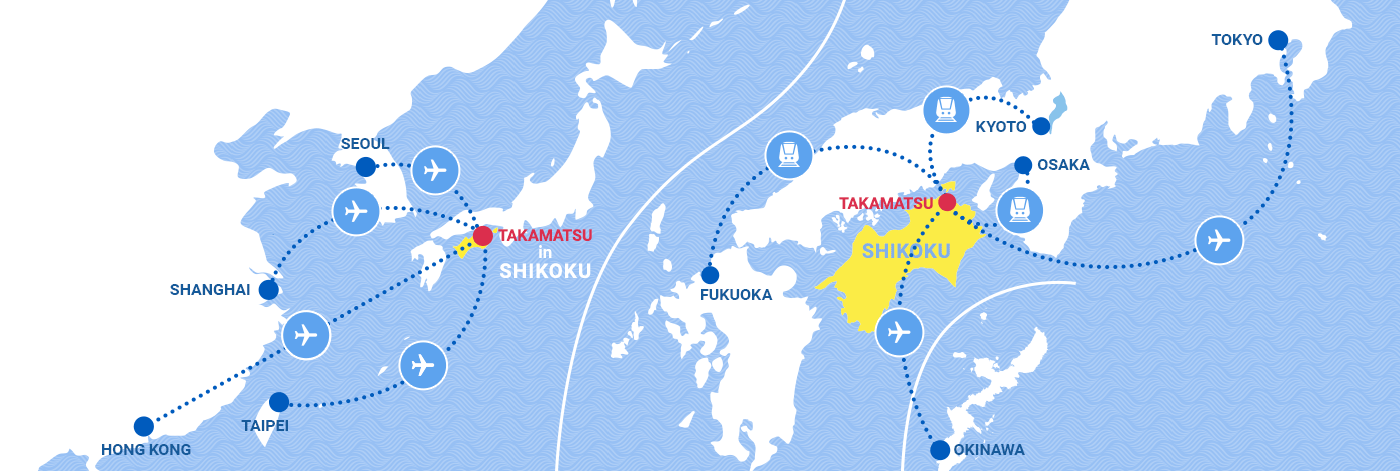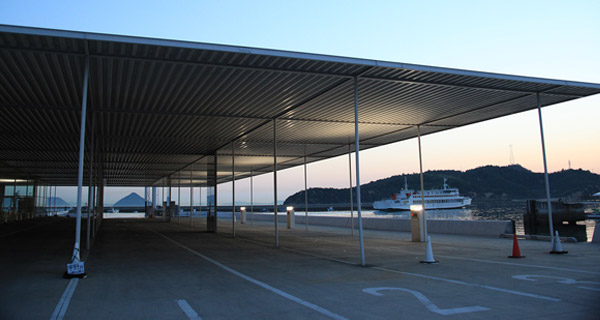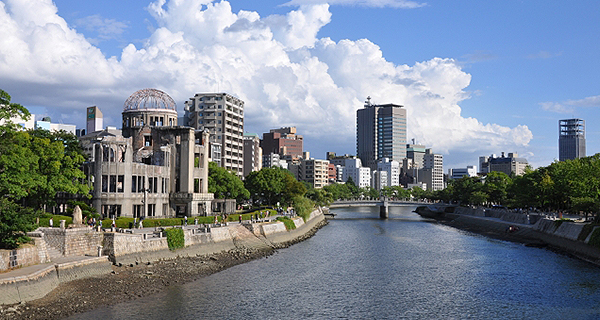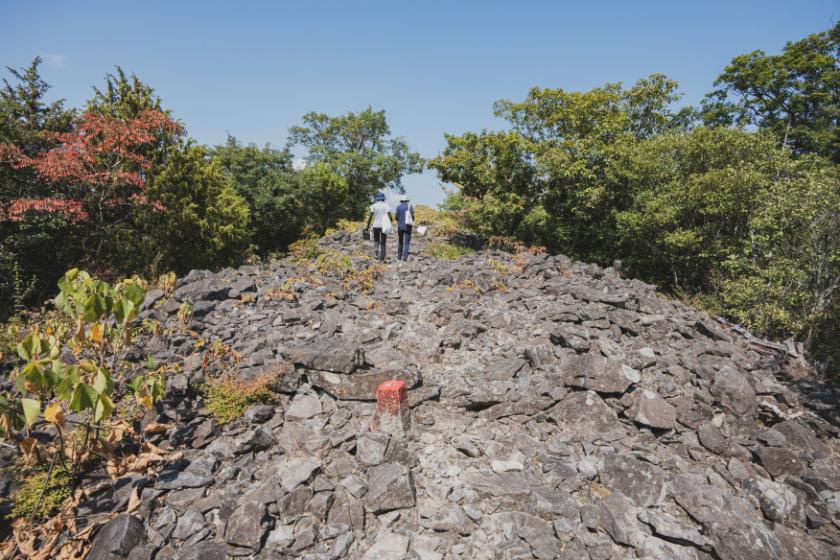
What do you think this pile of stones is?
It is a kofun that was built between the 3rd and 4th centuries.

Japan has approximately 160,000 kofun, which is nearly three times the number of convenience stores in the country. There are approximately 200 kofun on Mt. Iwaseoyama, which is near the center of Takamatsu City. While maintaining its connection to the Yamato government that was established in the 3rd century, the area developed distinctive types of kofun.
Mt. Iwaseoyama, home to a cluster of rare kofun
Ms. Shinagawa from the Takamatsu City Archaeological Center provided an overview of the Iwaseoyama Kofun Cluster.
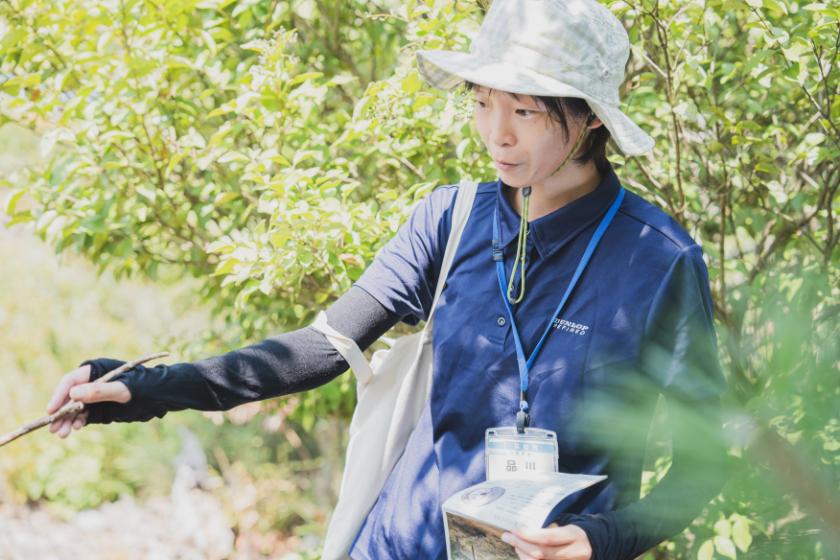
- The Iwaseoyama Kofun Cluster includes many tsumi-ishizuka stone mound tombs. Only about 1% kofun in Japan are tsumi-ishizuka.
- There are only three confirmed soho-chuen-fun, candy-shaped mound tombs, and they are all in the Iwaseoyama Kofun Cluster.
- Visitors can see the Kurinuki-shiki Sekkan sarcophagi carved from a single piece of stone.
- The cluster includes 16 kofun that are designated national historic sites.
Let's tour Mt. Mineyama, which is one of the mountains forming the Iwaseoyama Kofun Cluster together with Mt. Inariyama and Mt. Joganjiyama.
Nekozuka Kofun(Soho-chuen-fun, a candy-shaped mound tomb The first half of the 4th century Total length: 96m)
The Nekozuka Kofun is approximately 50 meters away from the mountain trailhead on the road.


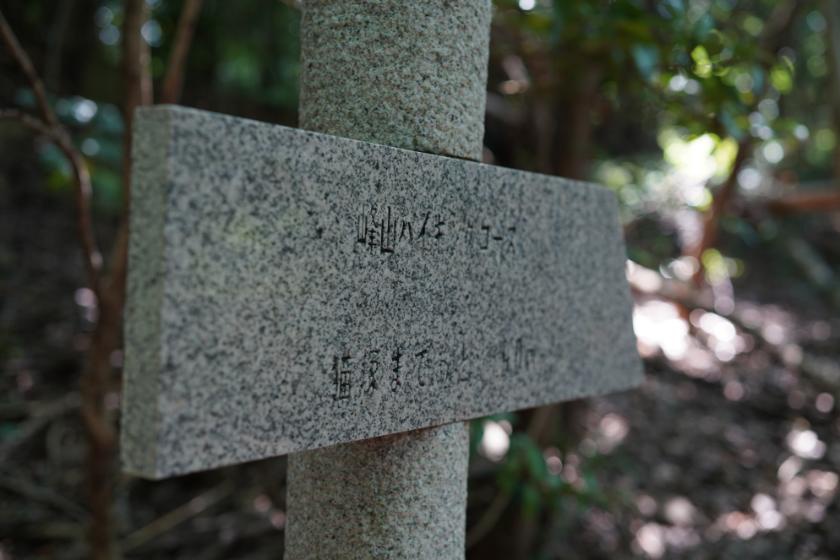
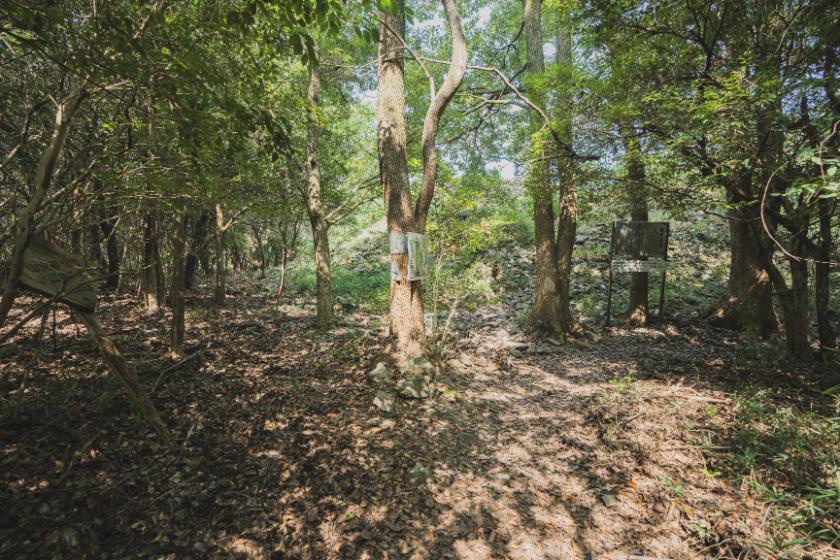
The kofun visible through the lush trees.
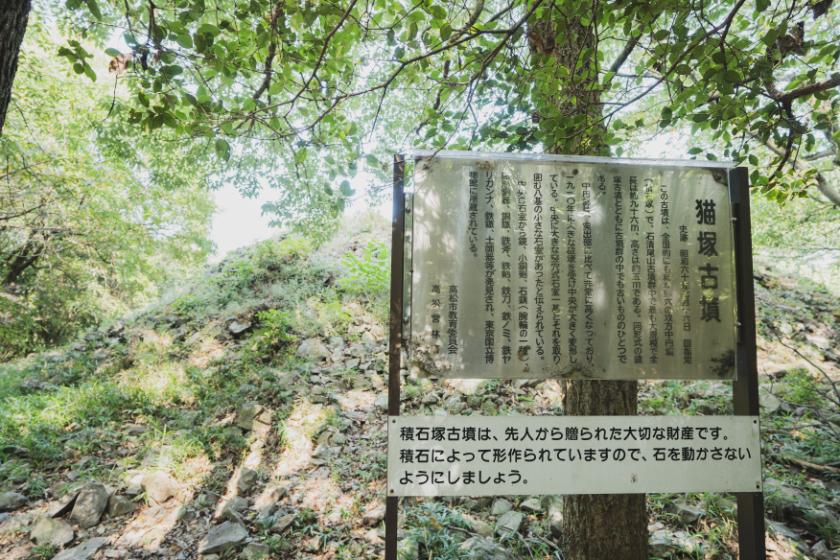
It is the largest kofun on Mt. Iwaseoyama.
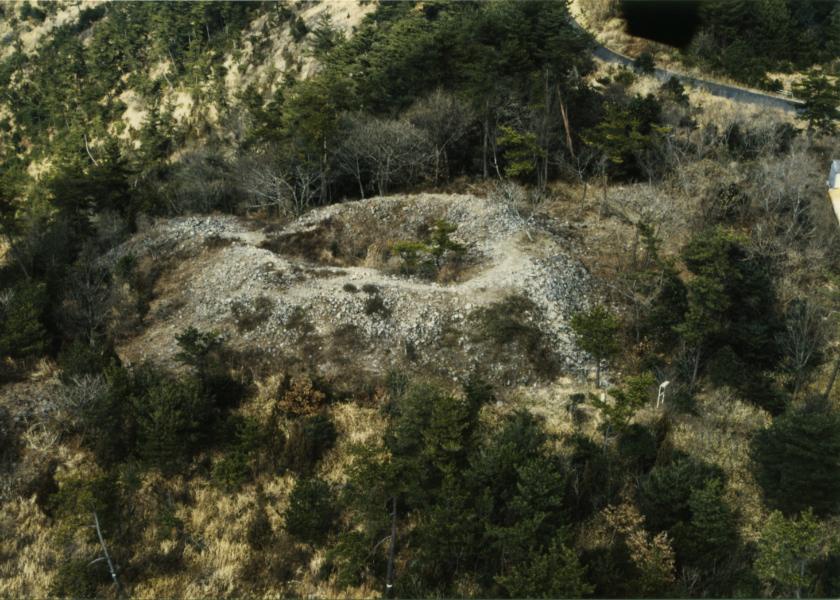
【Photo provided by the Takamatsu City Board of Education】
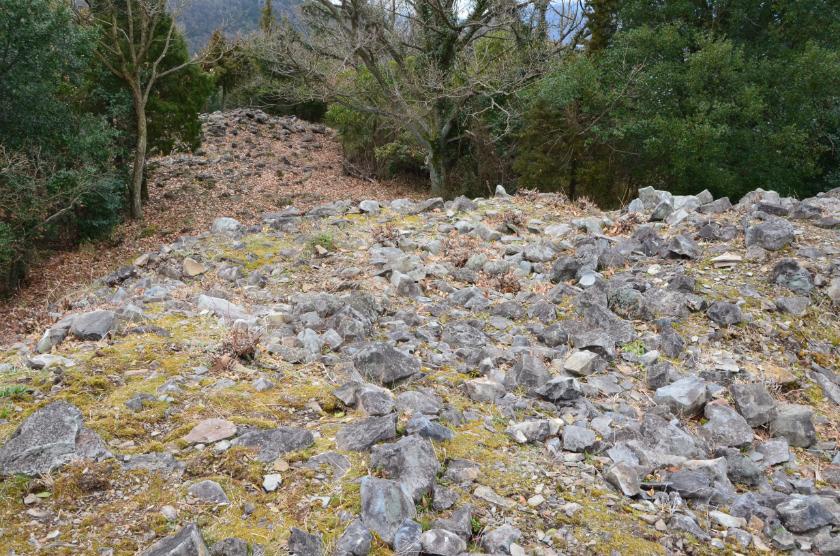
【Photo provided by the Takamatsu City Board of Education】

【Source:Kyoto Imperial University 1933『"Sanuki Takamatsu Iwaseoyama ishizuka no kenkyu (Research into the stone mounds of Mt. Iwaseoyama in Takamatsu, Sanuki),"』 Kyoto Imperial University The Archaeological Research Reports by the Faculty of Letters, Kyoto Imperial University volume 12. https://repository.kulib.kyoto-u.ac.jp/dspace/handle/2433/180764】
A feature of the Soho-chuen-fun burial mounds is their unique shape which resembles a candy. Although they were looted during the Meiji period, which left a large depression in the center, it is estimated that there were five to nine stone chambers.
While most kofun are built by moving earth into a pile, the tsumi-ishizuka stone mound tombs are made entirely of stone. A variety of theories have been proposed to explain the many stone mound tombs on Mt. Iwaseoyama, including traditions that endured from the Yayoi Period, the presence of andesite as a building material, and the influence of Goguryeo, an old Korean kingdom that built stone mound tombs.

Watch your step while hiking up.
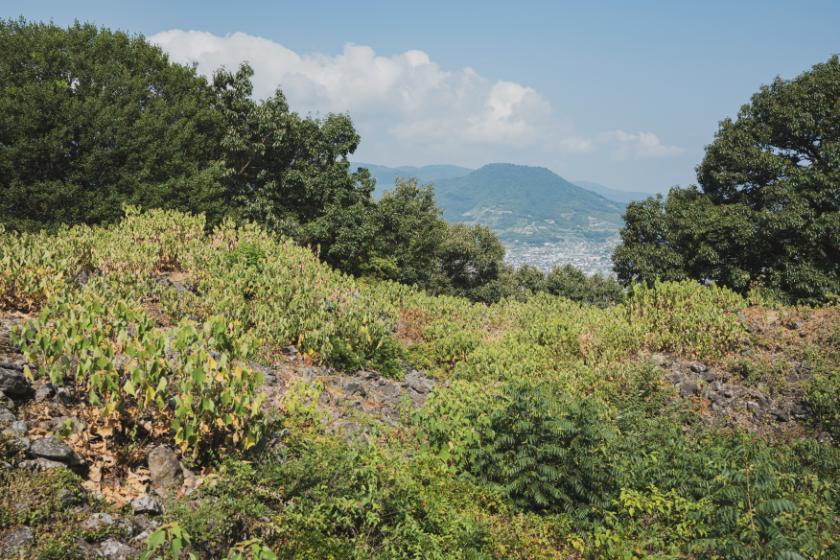

From the peak, the western side of Mt. Iwaseoyama, the town of Kokubunji and Mt. Katsugayama are visible. This means that the kofun would have been visible from those areas, too. The visibility of these kofun was probably to showcase the power of the individuals buried there.
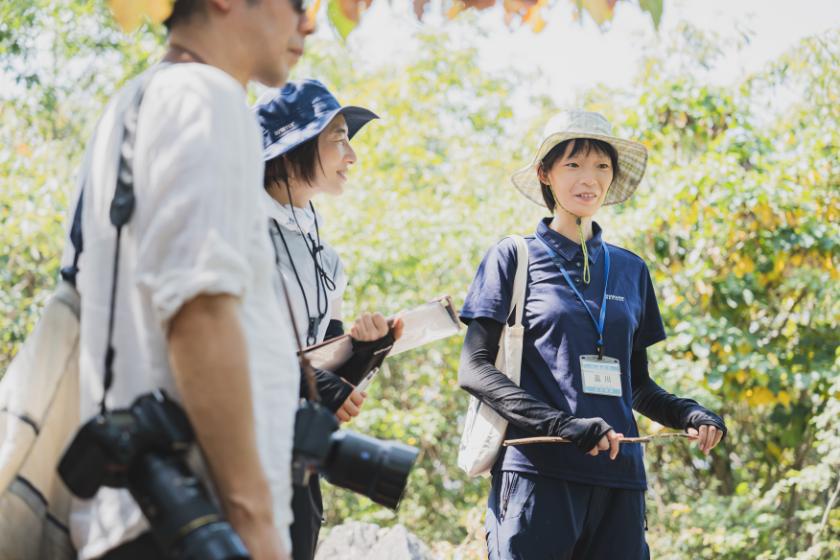
Because few artifacts, such as burial accessories have been found in the many kofun, a great deal of mystery remains regarding the individuals buried in the kofun. Moreover, only a handful of early kofun-period settlements have been found in Takamatsu, so it is uncertain where the individuals buried in the Iwaseoyama Kofun Cluster lived while they were alive. We look forward to future research.
Ishifunezuka Kofun(Zenpo-koen-fun, a keyhole-shaped mound tomb Latter half of the 4 century Total length:57m)
Now, let's continue on along the path.
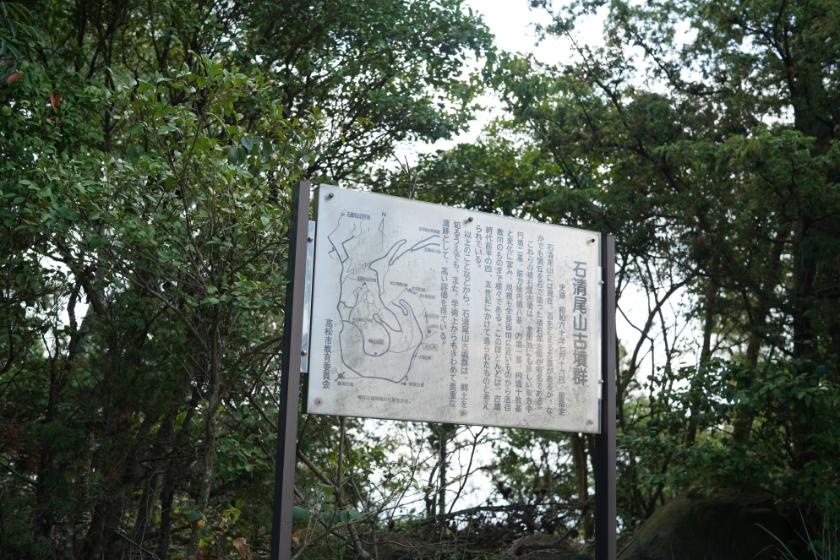
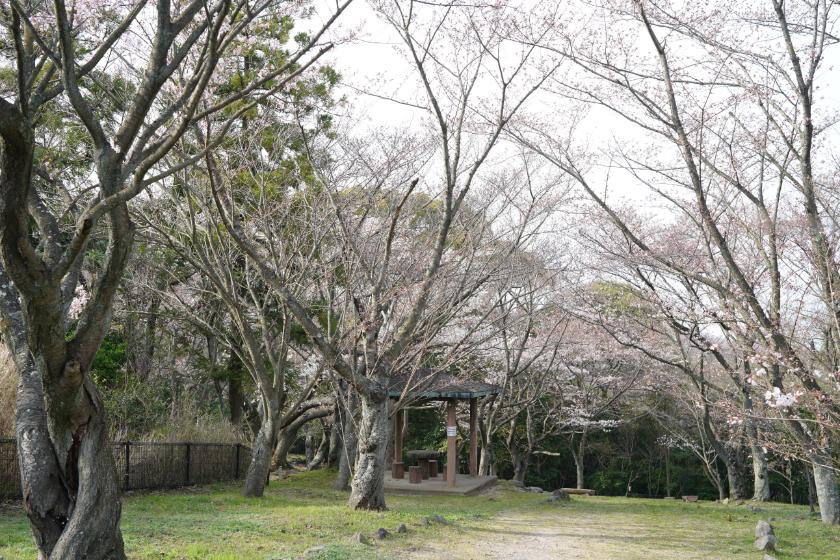
The standout feature of the Ishifunezuka Kofun is the kurinuki-shiki sekkan.
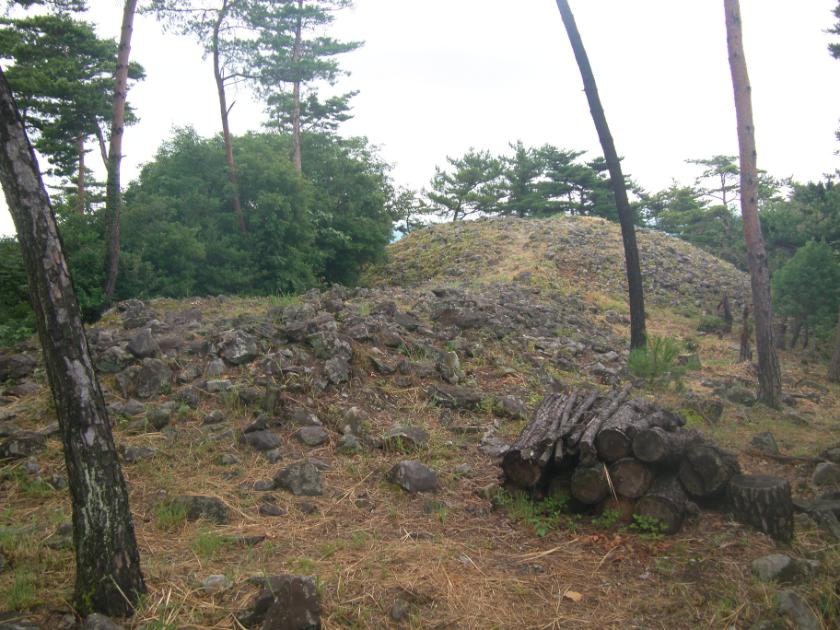
【Photo provided by the Takamatsu City Board of Education】

【Source:Kyoto Imperial University 1933『"Sanuki Takamatsu Iwaseoyama ishizuka no kenkyu (Research into the stone mounds of Mt. Iwaseoyama in Takamatsu, Sanuki),"』 Kyoto Imperial University The Archaeological Research Reports by the Faculty of Letters, Kyoto Imperial University volume 12. https://repository.kulib.kyoto-u.ac.jp/dspace/handle/2433/180764】

【Photo provided by the Takamatsu City Board of Education】
Kurinuki-shiki sekkan is a sarcophagus whose body and lid are carved from a single piece of stone. The stone sarcophagus in the Ishifunezuka Kofun was made of andesite from Mt. Washinoyama in Kokubunjicho in Takamatsu City. Mt. Washinoyama was both a source of stone and a processing site. In Kagawa Prefecture, eight stone sarcophagi that were produced there have been found, along with two others in Osaka Prefecture.
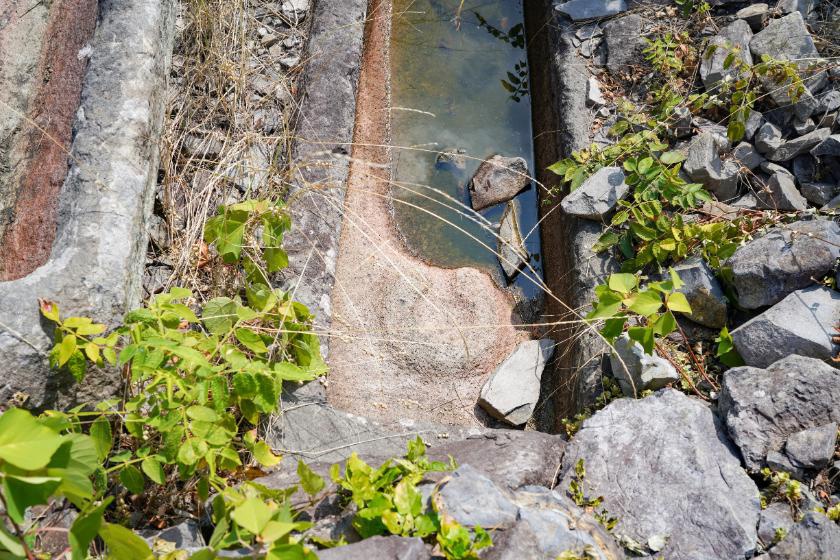
The lifelike form of the pillow brings to mind the posture of a body at rest during burial.
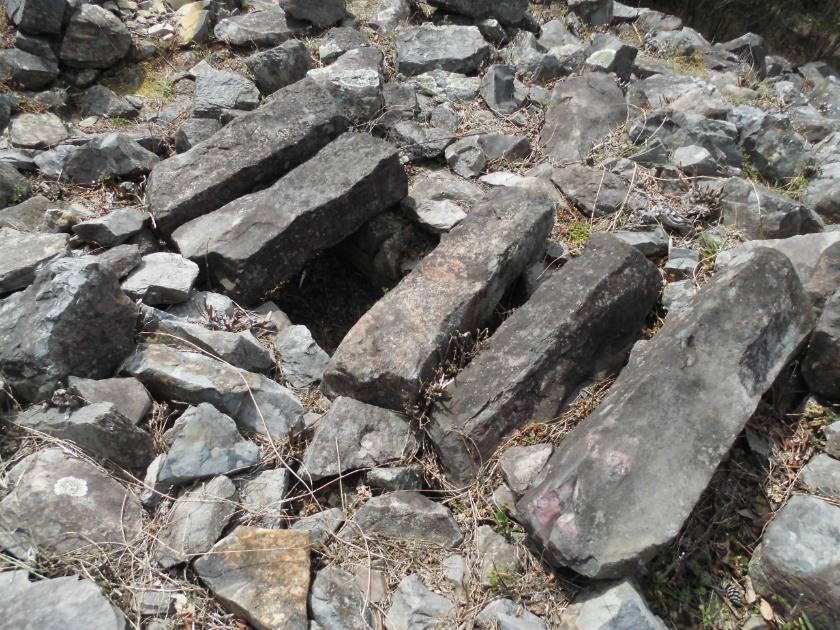
【Photo provided by the Takamatsu City Board of Education】
The small stone chamber is covered with large stones known as ceiling stones. It is assumed that the other stone chamber, which contained the stone sarcophagus, was covered with a wooden roof, as it lacks ceiling stones.
Kagamizuka Kofun(Soho-chuen-fun, a candy-shaped mound tomb The first half of the 4th century Total length: 69m)
As we approached the Kagamizuka Kofun, we heard a clinking sound beneath our feet. The little andesite stones that cover the kofun seemed to clink against each other as we walked, creating a melodic tune.
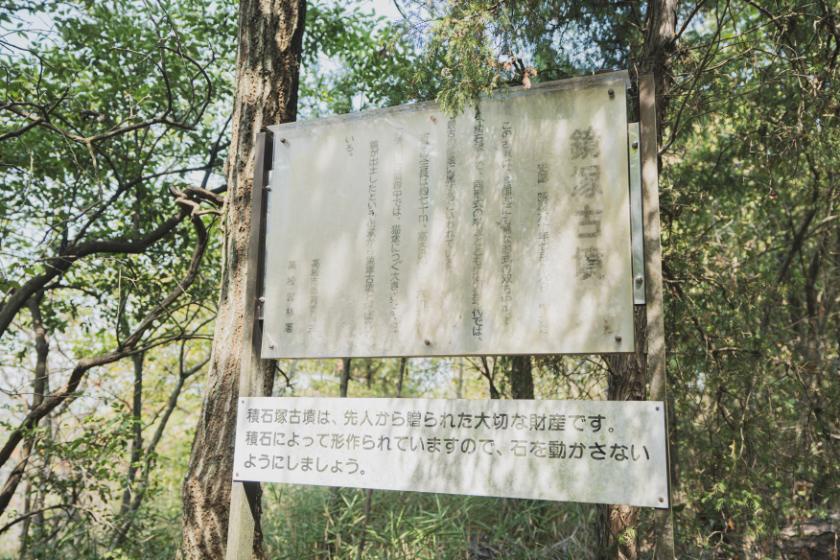

【Source:Kyoto Imperial University 1933『"Sanuki Takamatsu Iwaseoyama ishizuka no kenkyu (Research into the stone mounds of Mt. Iwaseoyama in Takamatsu, Sanuki),"』 Kyoto Imperial University The Archaeological Research Reports by the Faculty of Letters, Kyoto Imperial University volume 12. https://repository.kulib.kyoto-u.ac.jp/dspace/handle/2433/180764】

The sound itself has a uniquely Sanuki quality to it.
Kitaotsuka-higashi Kofun(Houfun, a square-shaped burial mound Early Kofun Period Side measuring10meters)
Kitaotsuka Kofun(Zenpo-koen-fun, a keyhole-shaped mound tomb Middle of 4 centuryTotal length:40m)
Kitaotsuka-nishi Kofun(Zenpo-koen-fun, a keyhole-shaped mound tomb Early Kofun Period Total length:19m)
If you head northward from the Kagamizuka Kofun, you will encounter three stone mound tombs next to each other.
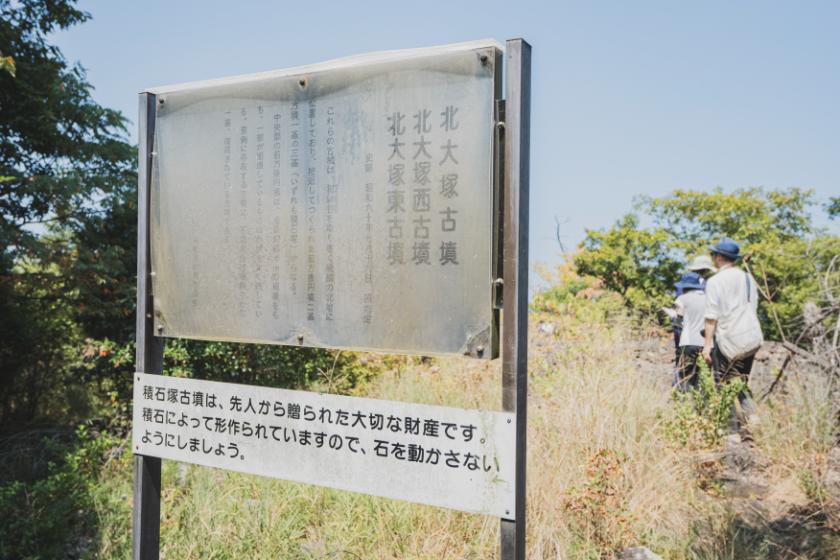
The Kitaotsuka-higashi Kofun is the only square-shaped burial mound on Mt. Iwaseoyama.

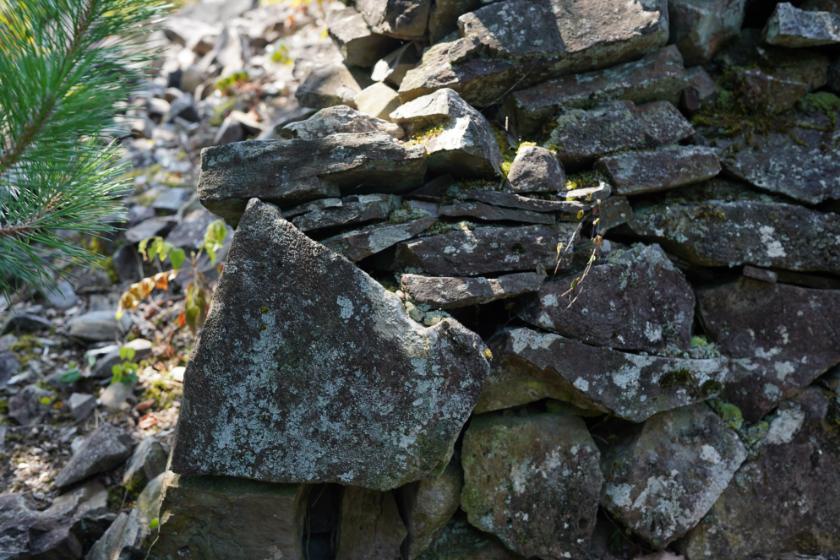
The original stonework from that period remains intact. If you take a closer look at the stone mound, you will notice that the bottom layers are built with larger stones, while the upper layers are made of smaller stones.

According to Ms. Shinagawa, the way stones were stacked changed over time, providing clues about when these tombs were constructed.
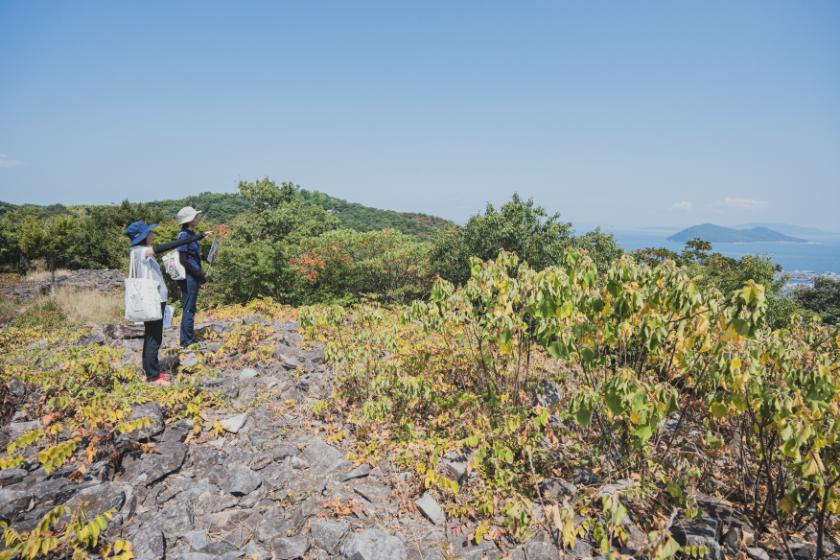
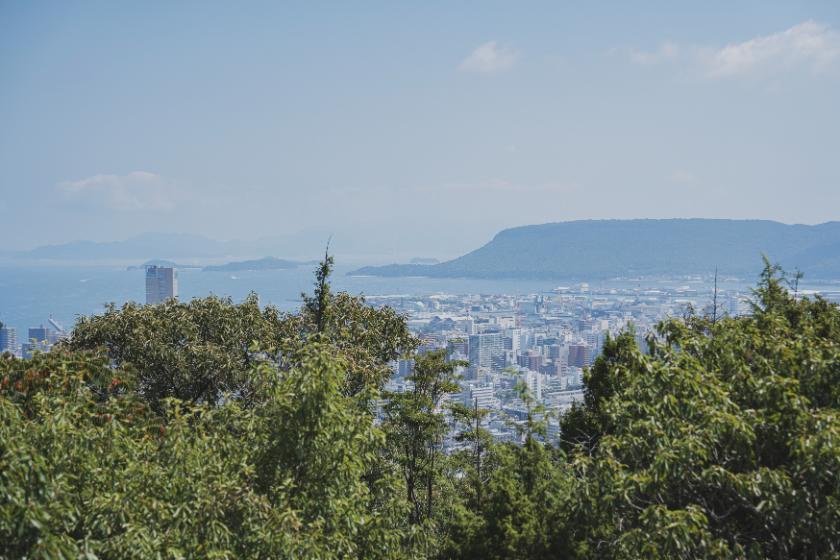

From the kofun, you can see Yashima and Megijima to the northeast. Back in that era, the coastline and the mouth of the Koto River were at the base of Mt. Mineyama, suggesting that these kofun might have served as lookout stations for watching over the ships navigating the Seto Inland Sea.
Iwaseoyama Kofun No.2(Tunnel-shaped stone chamber The end of the 6th century Contour measuring 10meters)

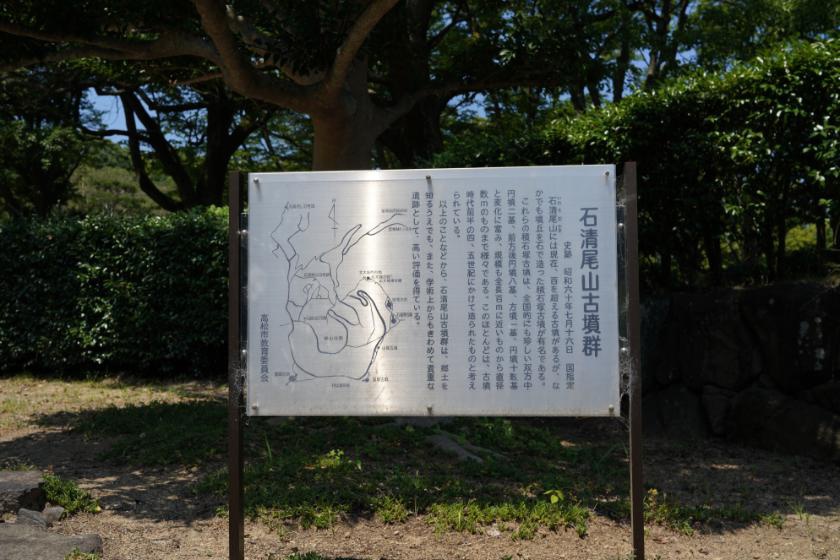
In the latter half of the 6th century, tombs constructed with tunnel-shaped stone chambers began to replace the existing stone mound tombs. Unlike the conventional vertical stone chambers that required coffins to be inserted from the top, horizontal stone chambers allowed coffins to be inserted from the side.

The entire tomb was covered with soil, but the stone chamber was constructed solely from stone. The chamber's walls and ceiling are built with stones of different sizes and shapes. Once the burial took place, closing stones were used to seal the entrance from the side, but it could be removed to facilitate additional burials.

In the ancient text the Kojiki (written in 712), there is a story about Izanagi following his deceased wife Izanami into the realm of the dead, known as Yomi. When Izanagi encounters her decaying body, now beyond recognition, he is overcome with fear and runs away. He arrives at the threshold separating the realm of the dead from the world of the living and blocks the opening with a large rock.
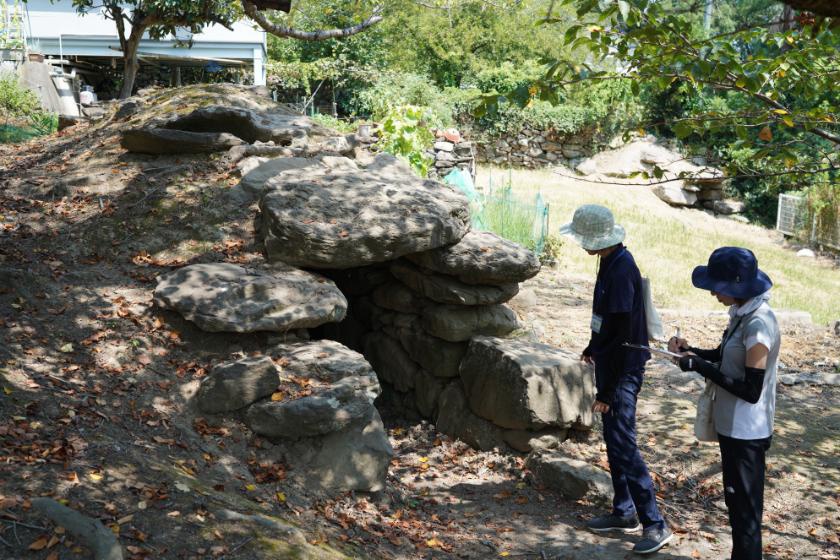
Some believe that the Yomi was inspired by these horizontal stone chambers, and the large rock represents the closing stone. It is interesting to consider these myths while exploring the kofun.
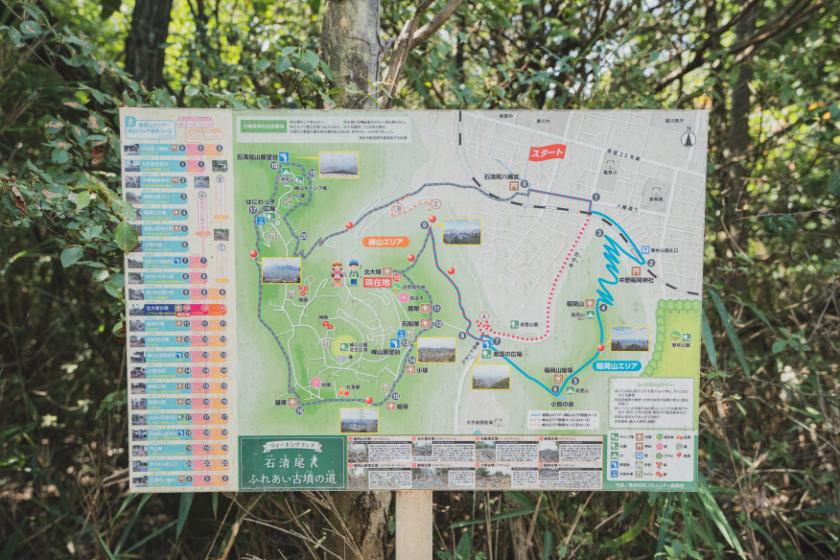
These kofun are a less than two hour-hike from the Mineyama Park parking lot, making it a perfect hike.
For more information about hiking options:
▼【Adventure tourism】Experience low-altitude mountain climbing at Takamatsu Crater Goza in Kagawa and walking tours in Busshozan
▼Hiking in Kagawa — Ideal for beginners and families! Omusubiyama in Takamatsu
Precautions for visiting the kofun
- Do not alter the position of any of the stones around the kofun, please.
- Wear a long-sleeved shirt, full-length trousers and sneakers. Wear light colored clothing to deter mosquitoes and bees. Avoid black clothing.
Mineyama Park parking lot
- Address
- 1838-80 Mineyamacho, Takamatsu, Kagawa
Takamatsu City Archaeological Center
- Address
- 1-5-1 Bancho, Takamatsu, Kagawa In Yonbancho Square
- Business hours
- 9:00-17:00
- Regular holidays
- Saturdays, Sundays, Holidays, and the year-end and new-year holiday (12/29-1/3)
- TEL
- 087-823-2714
- URL
- https://www.city.takamatsu.kagawa.jp/kurashi/kosodate/bunka/maizobunkazai/
Gathering date:2024.11.6 / Mineyama Park parking lot




